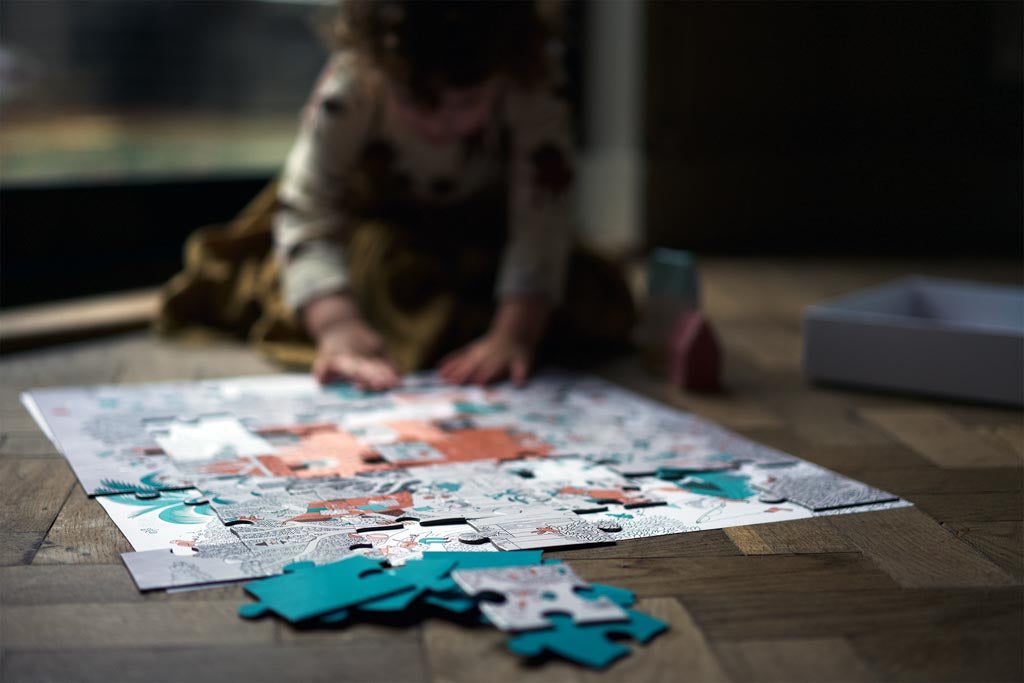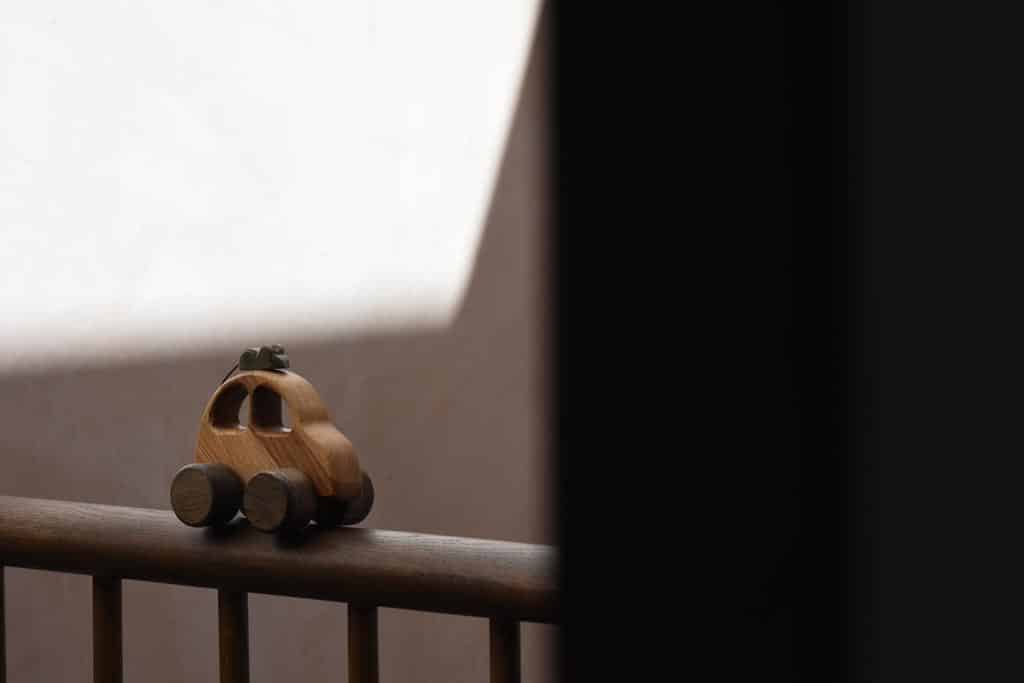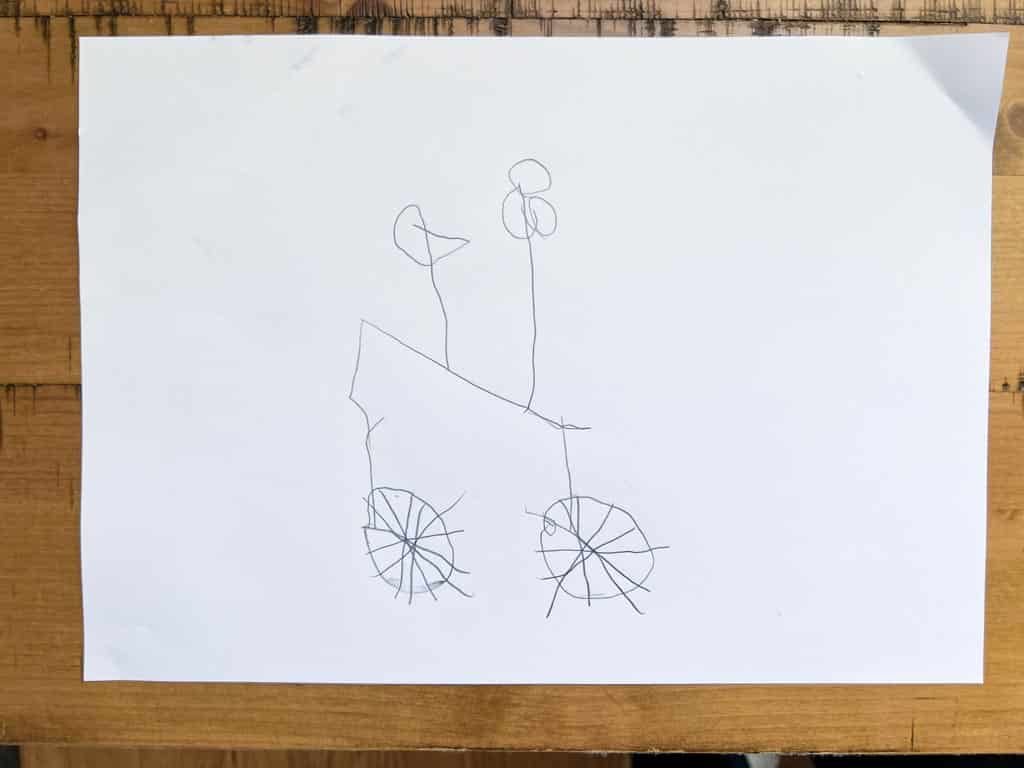Up, up, up.
Your child is building a tower, one block at a time.
Higher and higher she goes, the delight evident on her face as she meets each new challenge.
It’s now so tall she can’t add any more blocks. So what next?
Crash! Cue squeals of laughter. Down it all tumbles, the tower deliberately kicked over.
But why?
After all those connections, one block on top of another, it was time to explore how they disconnected.
This is the connection schema at work.
Identifying the connecting schema in your child’s play
Schemas are repeating patterns in your child’s play.
Your child is trying to make sense of the world. She does it by hypothesising how things work and then testing her ideas to destruction.
In this case she is learning about how things connect.
It could be wooden train track or magnetic trains, paper clips or paper chains. What’s important is that two discrete objects are brought together in a semi-permanent way.

The best toys for encouraging the connecting schema
Get the toys right and you won’t be able to stop your child connecting and making connections.
- Building Blocks. On the face of it, stacking blocks or lining them up doesn’t seem like true connecting. But the first step of connecting is to make contact. That’s the big idea. How materials join is secondary. Above, below, next to, in front of… Understanding how objects come together is a fundamental skill.
- Construction Sets. Toys such as K’Nex or magnetic blocks offer a variety of ways to connect pieces, fostering creativity and problem-solving as your child figures out different ways to combine the components.
- Threading and Lacing Toys. These can range from simple bead threading sets to lacing cards. They’re excellent for developing fine motor skills alongside the connecting schema.
- Puzzles. From simple wooden peg puzzles for younger children to more complex jigsaw puzzles for older ones, these toys are great for exploring how pieces connect to form a whole.
- Train or Vehicle Sets. A wooden train set is a classic connecting schema toy. If you have a toddler, you will have seen first hand the magnetic appeal (sorry!) of these toys.
- Art and Craft Materials. Materials such as glue, sticky tape, and string can be used to connect different materials in unique ways. Think collage and junk modelling.
Connect with tape, glue, and ribbons
Craft activities are a fantastic way to explore the connecting schema. The use of everyday materials such as tape, glue, and ribbons can open up a world of creative possibilities for your child. Let’s dive into some delightful craft ideas that will get those little hands busy connecting!
- Sticky tape collage. Provide your child with a variety of materials such as coloured paper, fabric scraps, buttons, and leaves. Then, arm them with some sticky tape. Allow them to create a collage by taping these materials onto a piece of paper or cardboard. This activity not only engages them in connecting different materials but also unleashes their artistic side.
- Paper chains. Paper chains aren’t just for Christmas. The challenge of looping and connecting strips of paper is fun all year round.
- Ribbon weaving. For this activity, you’ll need a sturdy piece of cardboard with slits cut along the edges and an assortment of ribbons. Teach your child to weave the ribbons through the slits to create patterns. This is also a great fine motor exercise.
- Pasta necklaces. Is there a more iconic preschool activity than pasta threading? Make it more beautiful by painting the pasta first or increase the challenge by using beads or buttons.
- Nature collage. Go for a walk in the woods and pick up anything that catches your eye. Leaves, bark, sand, pine needles, anything. Once back indoors, offer your child some paper and glue, sit back and watch them create.
- Junk modelling. Get some cardboard tubes, egg boxes, cereal boxes and other child-safe materials from your recycling bin and get busy. This activity is a real connecting schema challenge. How will you join the pieces? What is sticky enough to make the join? Sometimes it’s glue, sometimes only tape will do.
Connecting with everyday stationery
Even the most mundane office supplies can turn into fascinating toys when viewed through the lens of a child’s curiosity. Stationery items such as paper clips, bulldog clips, post-its, staples, treasury tags, sticky labels and ring binders can provide countless opportunities for your child to explore the connecting schema. Here are some creative ways to put these everyday items to use.
- Paper Clip Chains: Give your child a handful of paper clips and demonstrate how they can be linked together to form a chain. Encourage them to create the longest chain possible, or perhaps challenge them to make patterns using coloured paper clips.
- Bulldog Clip Art: Provide your child with an assortment of paper pieces of different colours, sizes, and shapes. Show them how to use bulldog clips to connect these pieces and create abstract 3D art structures.
- Post-it notes: How will you use them? To stick to a wall, to leave messages, to chain them together? Will you always lay them flat or can you make other shapes? Have you tried rolling them to make a tube? Or folding to make an open-ended cuboid?
- Stapler: Staple sheets of paper together and make a book. How will you fill it? Or staple sheets to make a picture? My daughter connected several sheets of printer paper together, in the shape of a life-sized stick man, and lay down on top of it to see if it matched.
- Treasury tags: Connect sheets of hole-punched paper. Will you make a book? Or join several sheets in a more creative way?
- Collage with stickers: Is there a more readymade way to connect than using stickers?
- Ring binder: Learn to use a hole punch. File your best pictures and writing in a ring binder. You have your first book.
- Rubber bands: You can connect using rubber bands in all kinds of ways. What will you join?
Remember, safety comes first. Always supervise your child while they play with these items, especially with smaller objects or sharp tools like staples. Office supplies can provide an unusual and exciting avenue for your child to explore the connecting schema, opening their minds to endless possibilities right there on your desk.
Final word: connecting the dots
Every tower your child builds, each paper chain she creates and every hole-punched page she connects is a step towards understanding her world. Through the connecting schema, she is not only discovering how objects relate to each other, but also developing critical cognitive skills, honing fine motor abilities and exercising her boundless creativity.
By providing the right materials and fostering a supportive environment, every moment offers learning potential.
So dig out that office stationery, wheel out the craft trolley, and set your child’s imagination free.
Are you ready for school?
Do you have a preschooler? Would you like them to develop some key skills before starting school? How wonderful to go into school on that first day feeling like you belong.
Get Set Five is a year-long course full of fun and free activities to do with your child.




